18th June, 2023
Zululand in the 21st Century
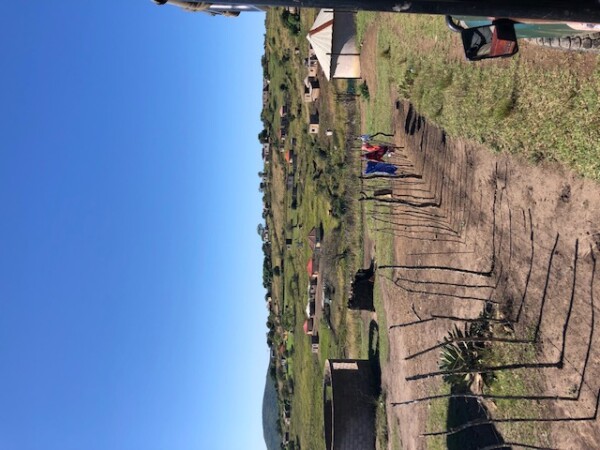
When I dreamt of Africa, I always envisioned a wide, endless landscape with animals roaming free. I had no real sense of what the areas surrounding the wildlife would look like. I hate to admit it, but my only frame of reference was the movie, Out of Africa, and that took place in Kenya in the early 1900s. Other than in cities, where do the people live? In what kind of homes? How do they survive, and do they hold on to their old customs or embrace a more modern way of life? We had so many questions. Fortunately, between our driver, Richard, and our ranger, Siya, we received many answers.
After four days at The Beverly Hills Hotel in uMhlanga (North Durban), Richard picked us up and took us on the two-and-a-half-hour drive to Thula Thula. It was pouring rain. So much so, sometimes we could barely see out the windows. When we did, we saw vibrant green rolling hills and pecan trees which led to miles and miles of sugar cane fields. Eventually, they gave way to flat land where tall trees that looked like stick figures lined the highway. We were told these are gum trees and are used for making paper. “Phew! What is that smell?” I asked Richard. “The paper mill,” he replied. “These trucks you see are carrying the logs to the port at Richard’s Bay. We also mine titanium, copper and zinc.”
The closest town to Thula Thula is Empangeni. As we drove through town, we were quite surprised to find out they had a KFC on practically every corner. “Everyone loves KFC here,” Richard told us. The town has a population of approximately 66,000. There were churches as many are Christian. There were mini malls and McDonalds and Burger Kings. There was even a Mercedes dealer! Outside the food market was a line of people. “Why are there so many people waiting in line? I asked. “They are waiting for their food cards. From the government.” (I was reminded of Cuba and the food coupons they get monthly, barely covering the family’s needs.) Some areas were neatly manicured and others held open-air markets on the sidewalks with crowds of people milling about and lots and lots of trash. I asked Richard about the trash problem but didn’t get a direct answer. “Maybe they don’t have enough cans or workers to pick it up,” he offered.
I should note, we were in KwaZulu-Natal, a province in South Africa that used to be called Zululand. Its inhabitants are predominately Zulu. These are the people to whom I am referring.
The roads turned to dirt as we left Empangeni. Surrounding Empangeni were several villages that lie across the hills. There was much more settlement than we expected. We noticed many of the structures were circular, one-room buildings. When we asked about this, we were told that each compound might have a small rectangular main house with the kitchen, living area and a couple of bedrooms. The round buildings were for grandparents, or maybe the eldest son. He would get his own one-room house built next to the gate so he could have his “friends” come by without disturbing the family. And there is always one building for their ancestors. They believe their ancestors stay with them beyond death. This is where they go to pray to them and to talk to them, looking for advice and gaining comfort.
Almost no one has a car. They walk everywhere while in the village and take the bus if they need to go to town or to work. Everyone owns cows and goats. Every morning they are let out of their compounds to roam and feed on the grass. Every evening the cows and goats find their way home. If they don’t, a neighbor will kindly return them to their owner. As we drove up and around the hills, we saw cows and goats grazing along the road, walking on the road and sleeping on the road. They looked to be healthy and well-cared for.
Just beyond the gates of Thula Thula is the road leading to nearby Buchanana Village. This is where we were invited to visit on day three of our tour. We were to meet a Sangoma. The Sangoma can be a man or a woman who through communication with his/her ancestors, is able to bring healing to the villagers. The one we were to meet was a woman.
Siya drove us into the compound. Three children were waiting for us. Curious to see us westerners, they peered out from behind bushes and then slowly showed their faces with big smiles across them. They giggled and said hello. Siya led us to one of the circular buildings. We took off our shoes as a matter of respect and entered the room where the Sangoma greets those who come for help. There she was. She wore a blouse with a leopard design and a long black skirt. Underneath her skirt she wore blue jeans. Perhaps the jeans were used to protect her legs from the contraptions she wore around her ankles. They were made from beer or soda can tops and were strung together to create a jingling sound when she moved or danced. She wore here hair in braids of beads and her feet were bare. Her eyes were focused downward. In the Zulu culture, it is impolite to look someone in the eyes.
The interior of the building was sparse. The floor was cement. The room wasn’t furnished. Her colorful sarongs hung against the wall. The Sangoma sat on a mat with her feet stretched out before her. We sat on rugs against the wall in a semi-circle on the floor. Next to her were a few candles and some ceremonial sticks. To the side of her sat two young ladies who we would learn were her daughters. Both were dressed more modernly than their mother. One was dressed in a short skirt and a tee-shirt. The other woman wore a tight-fitting long skirt and top. In front of her was a drum. Eight inquisitive Americans sat quietly as we waited for our lesson on the spiritual world of the Zulu people.
The Sangoma welcomed us with a dance while her youngest daughter beat the drum and we clapped. When she finished, we were encouraged to ask her questions. One person asked how she became a Sangoma. Siya began interpreting as she does not speak English.
“I started having dreams when I was twenty-three. Two men came to me who said they were my grandfathers and told me my gift was to be a Sangoma. I wanted nothing to do with it. The dreams continued but I kept denying them. One night my grandfathers asked me why I didn’t want to become a Sangoma. I didn’t want to wear the traditional clothing. I didn’t want to wear these things around my feet. I was afraid. Afraid the villagers would be frightened of me. I also was afraid I would fail. They told me they would guide me. But they also warned me that if I didn’t become a Sangoma, I would die. I agreed and went to train with other Sangomas.
“My first day, a man came to me who was very ill. I didn’t know what to do so I prayed. I heard my grandfathers tell me to give him a mixture of herbs and send him on his way. Several days he came back. He was well and very grateful. From then on, I knew I could rely on my ancestors to guide me.”
The Sangoma is well respected within the Zulu culture. And there isn’t necessarily one to a village. There can be several. We also learned that the Sangoma can heal spiritually, emotionally, and physically. “When the villagers come to me, they don’t tell me what is wrong. I tell them, she added. “If I cannot help them, I will send them to a modern doctor.”
Frankly, Jay and I found the contrast between the old world and new world disconcerting. There was this woman dressed in her ceremonial garb with blue jeans peeking out from underneath. Next to her was her daughter, maybe twenty, wearing a modern and very slinky outfit. The Sangoma was a wife to a husband who had three other wives. She and the others live in an area where a dangerous wild animal could wander into their yard at any moment. We understand the villagers are poor, yet nearly every dwelling had a satellite dish. There is no indoor plumbing, and they have to collect their water from a communal area where it is delivered. They live with cows and goats as their main source of food and income and yet there were fast food chains in town. They don’t drive and yet a Mercedes dealer can be found in town too. I understand their desire for modernization, but my romantic (and somewhat small-minded) Out of Africa fantasy came crashing down fast.
NOTE: The Sangoma’s words are paraphrased from Siya’s interpretation. 

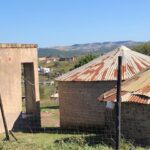
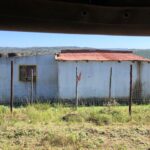
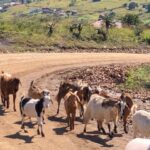
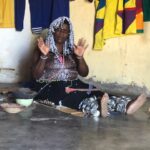
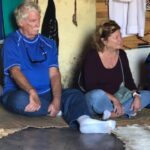
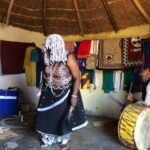
What a wonderful experience! Thank you for your beautifully written description. I love your adventurous spirit. Thank you for sharing it with us!! 💕
Very interesting on all fronts. I’m definitely surprised by the KFC, McDonald’s and the Mercedes dealer.
An interesting place for sure,thanks for sharing. Beautifully written.
I loved reading every word of this! You so beautifully painted it all, I’m rapt!